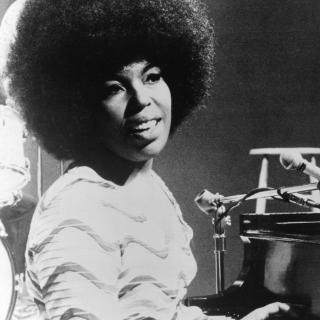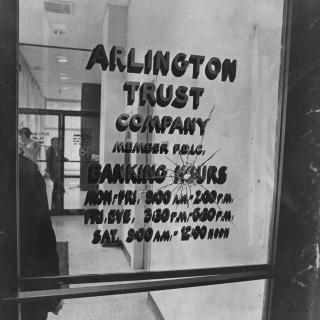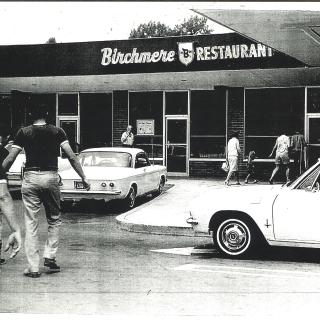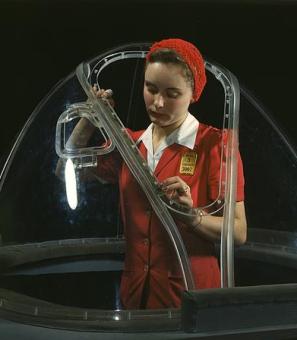"If the government won’t stop the war, we’ll stop the government": May Day Protests of 1971
“Mayday! Mayday! Mayday!” It’s a phrase you often hear in action movies, when something goes inexplicably wrong. It was also an apt description of the chaotic scene in Washington in the spring of 1971.
The Vietnam War had been raging for years, and many Americans were put out with the government’s inability or unwillingness to end the war. Thousands set upon the capital to try and make Congress and the President listen to them. Indeed, Washington was ripe with anti-war activity as various groups staged marches and sit-ins in the city (and in Arlington and Alexandria) to protest the actions of the government.
In early May, however, a new coalition tried a different tact. Under the mantra “if the government won’t stop the war, we’ll stop the government,” the so-called Mayday Tribe sought to stop the United States government from functioning entirely.[1] Their plan called for protestors to be stationed at 21 different strategic points across the city, where they would block traffic and make it impossible for federal employees to get to work.
The group, which was a sect of the Peoples Coalition for Peace and Justice, set up its base of operations in the West Potomac Park, and hundreds of young protesters flooded into the camp to get prepared, and to also enjoy a rock concert or two.[2] However, as protestors were preparing in the park, federal officials were making preparations of their own.
The Mayday Tribe was vocal about what they intended to do, and in response the government readied the city with a massive police and National Guard force.[3] Attorney General Richard Kleindienst announced that over 7,000 policeman and national guardsmen would be stationed throughout the District over the course of the week. Interestingly, the Attorney General admitted at the time that he felt that this much force was unnecessary, calling the threats from protestors to shut down the government “just a lot of hot air.”[4] Hot air or not, Senator Hugh Scott, from Pennsylvania, expressed that “the Congress will not be intimidated.”[5]
Protests began May 1, and many in Washington quickly saw that this was different than anything the city had seen before. The Mayday Tribe proved to be more militant than previous protestor groups.[6] They organized several sit-ins, and stressed that they hoped to achieve political change through “militant but nonviolent action.”[7] The Vietnam Veterans Against the War also joined the massive protest, marching on Capitol Hill.[8]
The chaos led the government to initiate a huge crackdown on the protestors. At promptly 6 a.m. on May 2, police rushed into the encampment in West Potomac Park.[9] The Nixon administration had revoked the campsite permit, alleging that narcotics use and the threat of violence violated the permit.[10] Over 15,000 people fled from the camp, but leaders vowed to “rally their scattered followers.”
The displaced protesters were quick to call out the administration, with leader Rennie Davis charging that “President Nixon suspended the constitution,” and that Nixon had perpetrated the threat of violence.[11] The group issued another statement saying that “the military state has placed the city of Washington in a state of siege” but promised to continue the protest the following day.[12] Nixon countered by insisting that “we will arrest those who break the law.”[13]
As protestors were regrouping, the Federal government called in further reinforcements. On the evening of May 2, 4,000 Marines from Quantico arrived, with an additional 2,000 Marines from Camp Lejeune.[14] They were joined by 4,000 paratroopers out of the 82nd Airborne Division out of Fort Bragg whose arrival presented an intimidating sight, as they “climbed into army trucks with their M-16 rifles.”[15]
On the morning of May 3, protestors again took to the streets, using anything they could find to impede traffic. Many resorted to “using as weapons trash, tree limbs, stones, bottles…” to try and keep federal employees from getting to work.[16] The police and soldiers combatted these tactics by using nightsticks and teargas.[17] Police Chief Jerry Wilson described the actions of protestors as “a great deal of malicious and wanton destruction of property.”[18] As the day rolled on, the “tear gas filled the air over some of the city’s most famous monuments,” making it hard to see.[19]
In the chaos, thousands of protesters – and bystanders – were arrested, “herded into buses”, and taken to makeshift detainment facilities at Robert F. Kennedy Stadium and the Washington Coliseum.[20] It was the largest mass arrest in U.S. history.[21]
Immediately cries of police brutality and inadequate facilities went up from the detainees. The detention centers were definitely not designed for comfort. As Jim Mann, a reporter for The Washington Post, recounted, the arrested protestors “had to build small fires on the floor just to show them we were cold."[22] Although no one was too keen to sleep on the muddy ground, the detainees’ spirits were lifted when the guards passed out hundreds of cigarette packs.[23]
Two of the protest’s leaders, Rennie Davis and John Froines, were charged by the FBI with conspiring to violate the civil rights of citizens and intimidating federal employees.[24] A vast number of the others were arrested on charges of disorderly conduct. Many “plead guilty,” paid ten dollars, and were out of jail within 24 hours.[25] Others were charged with more serious offenses, like destruction of property and assault, but not many of these cases ever made it to court.
The city slowly came to a calm over the next few days, with the protest officially being suspended on May 6.[26] However, the legal maneuvering was just beginning. Amidst accusations of police impropriety, many of those who were arrested were set free without ever being processed.[27] With a warning from the ACLU, over 2,500 cases were dropped by the end of the month. In all, only 400 cases actually made it to trial even though over 12,000 Americans had been arrested.[28]
While the May Day protests were unsuccessful in shutting down the government, the demonstration certainly made a mark as one of the most memorable marches on the Capital. Afterward, protest leaders quickly got back to work, planning their next big move. As Rennie Davis put it, “They are going to have to jail every young person in America before we are stopped.”[29]
Footnotes
- ^ Henry Aubin and Paul Valentine. "7,300 Police, Guardsmen Readied to Counter Disruptions Next Week." The Washington Post. May 01, 1971.
- ^ Ibid.
- ^ Ibid.
- ^ Ibid.
- ^ Ibid.
- ^ Ibid.
- ^ Paul W. "Spirit of Militancy Rises." The Washington Post. May 02, 1971.
- ^ Ibid.
- ^ “POLICE OUST 15,000 FROM CAMP IN D.C. 1971”. The Sun May 03, 1971.
- ^ Ibid.
- ^ Ibid.
- ^ Ibid.
- ^ Ibid.
- ^ Ibid.
- ^ Ibid.
- ^ Richard Halloran. "7,000 Arrested in Capital War Protest; 150 are Hurt as Clashes Disrupt Traffic." New York Times. May 04, 1971.
- ^ Ibid.
- ^ Isaacs, Arnold R. "7,000 Arrested as Bid to Tie Up Capital Fails."May 04, 1971.
- ^ Halloran. "7,000 Arrested in Capital War Protest...."1971.
- ^ Ibid.
- ^ Kauffman, L. A. "Ending a War: Inventing a Movement: Mayday 1971." Radical Society 29, 2002.
- ^ "Coliseum Diary: 10-Hour Mixture of Ebullience, Boredom." The Washington Post, Times Herald, May 08, 1971.
- ^ Ibid.
- ^ Arnold R. "7,000 Arrested as Bid to Tie Up Capital Fails."1971.
- ^ Halloran. "7,000 Arrested in Capital War Protest...."1971.
- ^ Bart Barnes "Mayday Victims Cite Police Improprieties." The Washington Post. May 30, 1971
- ^ Ibid.
- ^ "U.S. Dismisses Cases of 800 Protesters." The Washington Post, Times Herald. Aug 27, 1971.
- ^ William L."Comic Trek Ends Mayday Activities."1971.





![Sketch of the mythical fuan by Pearson Scott Foresman. [Source: Wikipedia]](/sites/default/files/styles/crop_320x320/public/2023-10/Goatman_Wikipedia_Faun_2_%28PSF%29.png?h=64a074ff&itok=C9Qh-PE1)












